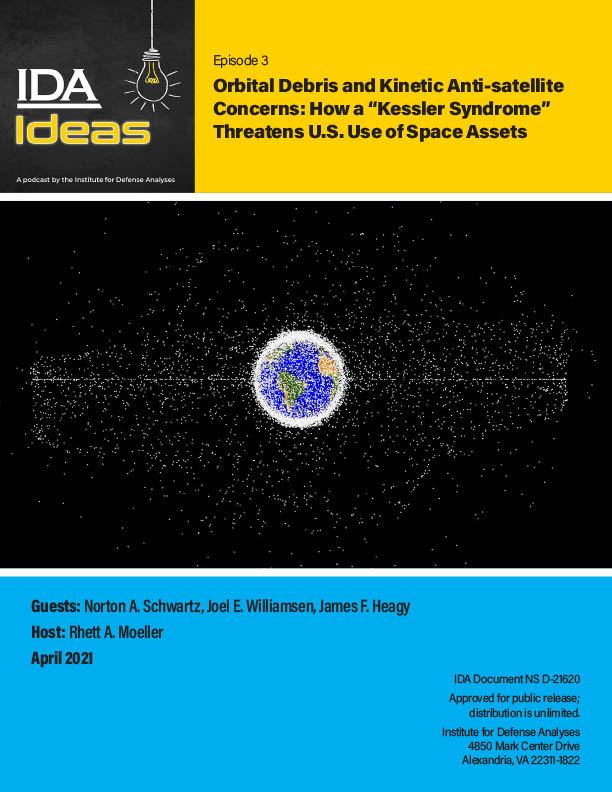IDA Ideas (Podcast Transcript) – Orbital Debris and Kinetic Anti-satellite Concerns: How a “Kessler Syndrome” Threatens U.S. Use of Space Assets
April, 2021
IDA document: NS D-21620
FFRDC: Systems and Analyses Center
Type: Documents,
Space
Division: Science and Technology Division,
Operational Evaluation Division
,
Science, Systems and Sustainment Division
Authors:
IDA document: NS D-21620
FFRDC: Systems and Analyses Center
Type: Documents
Division: Science and Technology Division
Authors:
Authors
Norton A. Schwartz, Joel E. Williamsen, James F. Heagy, Rhett Moeller
See more authors

